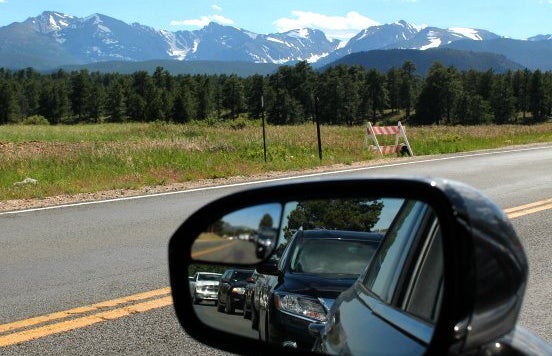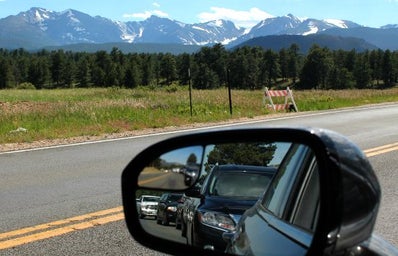When I was just barely a year old and the United States Grand Prix in Indianapolis was part of the Formula One track schedule, my mother bought my father tickets for all three days. As if witnessing a Formula One race weekend isn’t a rare experience already, this historic race in 2005 was the site of a race-altering protest during which most drivers on the grid did not race due to a technical discrepancy on tires. Fortunately, my father’s favorite driver at the time was Michael Schumacher, who both participated despite the protest and won the six-driver race.
Around the time I started high school, my father began to share clips of old Formula One races with me while explaining the dynamics and history of the sport, and soon we were watching old race clips on YouTube. Later, in 2019, Netflix released docuseries “Formula One: Drive to Survive,” which would serve as an in-depth glance at the teams, programs and drivers both on and off the track. Every TV season would reflect major moments of the Formula One motorsport season for the year prior, and my father and I have watched almost every season since. Since airing, the show has risen in popularity, and fans—particularly and especially in the United States—have drastically increased.
Like any male-dominated sports community, there are many long-time Formula One fans critical of its newer audience. This is especially true of women, who are often accused of only being interested in the sport because of their attraction to the multi-national grid of drivers. I feel that these generalizations do not speak for all new fans, so for those who want to be better informed, I’ve composed a concise guide to the very basics of Formula One based on the knowledge my father imparted to me.
What is Formula One?
Formula One, also referred to as F1, is an international racing competition at the highest level featuring single-seater cars. There are 10 teams with two drivers per team, putting 20 drivers on the grid at one time. Current teams include but are not limited to Mclaren, Red Bull Racing, Ferrari, Mercedes and Aston Martin.
When racing, drivers compete for points, which range depending on the top ten positions in the race (i.e. first place wins 25 points, second place wins 18 points, tenth place wins one point, etc.), while drivers who place 11th to 20th do not earn points. An extra point is awarded to the driver in the top 10 who achieves the fastest lap in each race.
The World Drivers’ Championship (WDC) is a ranking based on the combination of each individual driver’s points as the season goes on. The Constructors’ Championship is ranked based on the total points of both drivers for each team. At the end of every season, there is a WDC Champion won by a driver, and a Constructors’ Championship won by a team.
Basics
Schedule
There are 24 races during the Formula One season. Each race takes place during a “race weekend,” which consists of practice on Friday, qualifying on Saturday, and race day on Sunday.
Practice
Many factors go into a car’s overall performance–most of which are tested during Friday practice. Each track is different, so on this day the driver figures out the car’s specific needs for the track, attempting to push the limits of the car so it’s attuned and suitable to race on Sunday. There are usually three sessions of practice that last about an hour.
Qualifying
Also known as “quali,” each qualifying session includes drivers competing for their places in the 20-car grid that will be arranged in order of which driver completes the quickest lap. Depending on the track, there are three timed sessions, referred to as Q1, Q2 and Q3. In Q1, the elimination zone is 15th-20th place. The slowest drivers in Q1 are placed here and do not continue the qualifying session. Q2 is only the top 15, and the elimination zone is 11th-15th place, so the slowest drivers this round are ranked there and do not continue to the final session. Q3 is just the top 10 drivers, making this the shortest session. The remaining drivers take measures so that they can push the car as far as possible, racing the clock so as to complete a lap with the lowest possible time to be as high on the grid as they can.
The person with the fastest lap gets “pole position,” meaning they start first, and the rest of the drivers are placed accordingly in order of lap times. The top three drivers will be the most watched and reported on, as viewers are interested in whether they can maintain their high place on the grid or if it will get taken from them by a driver behind them.
Race
Races, also referred to as Grand Prix, occur on the weekends of almost every week during the on-season and are each held in a different country, if not a different city. The time of day varies depending on the host country, and their national anthem is performed before each race. The formation lap is held before the race starts; drivers will be in their garages in the pit lane before the race, and when they’re ready to start the race they will all go around once. Journalists and mechanics will have been on the grid, but exit when drivers come around and officially line up. From here, the cars will go around once more together, maintaining their places with only the intention of heating up their tyres for best race performance. Afterwards, they line up one final time before the finish line. The lights will illuminate one by one before disappearing, marking the official start of the race.
Pit Stops
Historically, pit stops occurred so that cars could be refueled. Today, a typical, planned pit stop is used to replace the car’s worn tyres with fresh, new ones, and to address any parts of the car that may have been damaged while racing. Because these pit stops take place off-track, places and time can be lost, so it is important to strategize when and how often these pit stops occur, depending on tyre wear and the number of laps. Each driver must make at least one pit stop per race, which, if executed properly, can take anywhere between 1.9 to 2.5 seconds for a full, four tyre pit stop.
Key Terms and practices
Safety Car
The safety car is typically deployed when yellow and red flags are out, which appear when an incident has occurred somewhere on the track. Its purpose is to slow down the field and keep the drivers from racing so that anyone part of or managing the incident can be evacuated safely before the race continues. Drivers cannot race or pass when the safety car is out and must keep in line behind it. Once all is clear, the safety car exits the track and drivers can race at full speed again.
Radio
Drivers have access to their pit through an in-car radio to communicate with their engineer and vice versa. Engineers can saturate their drivers with valuable information such as lap pace, conditions of the car, weather concerns, pace compared to the next driver and updates on their teammate. Likewise, the driver can communicate any concerns about the car, surrounding drivers and any other information back to the team.
Tyres
The tyre system is mainly composed of three different types of tyres, which are referred to as softs, mediums and hards, along with two more types called intermediates and wets that are only used when necessary. Soft tyres are best for gripping the track and going fast, but they burn out quicker and last the least amount of laps. Medium tyres last a bit longer, and hard tyres are made of the toughest rubber of the three, made to last the longest stretch. They take the longest to heat, but once warmed up, or “come alive,” the tyres will persevere through hard racing. Intermediate tyres are used when the track is damp or will become so through sprinkling or light rain. In such instances, the heat that emulates from the cars tends to dry the track, and drivers will switch back to one of the aforementioned tyres. Wet tyres are made so that the rubber has a lot of tread, leaving grooves for water to go when there is medium to heavy rain during a race.
Kerbs and Chicanes
Chicanes are strategically placed tight corners created to slow the cars for safer driving, as F1 cars can sometimes reach speeds over 200 mph. Kerbs are quite literally the sides of the track that are slightly raised but can be easily maneuvered between at any speed.
DRS
DRS, short for Drag Reduction System, is a function utilized when drivers intend to overtake, or pass another driver. When DRS is turned on, the rear wing opens, allowing more air flow to go through the wing to give the driver more speed and thus a bigger chance at passing the adversary ahead. DRS can be used as long as the car is within one second of the person they’re overtaking, and only when on DRS sections of the track.
Regardless of where and how one discovers a sport, their interest should not be questioned solely based on this information. Sports are meant to be enjoyed by communities, which can only thrive if the setting is informative, welcoming and inclusive. The next Formula One race is the United States Grand Prix and will be streamed on ESPN on Sunday, October 20.


